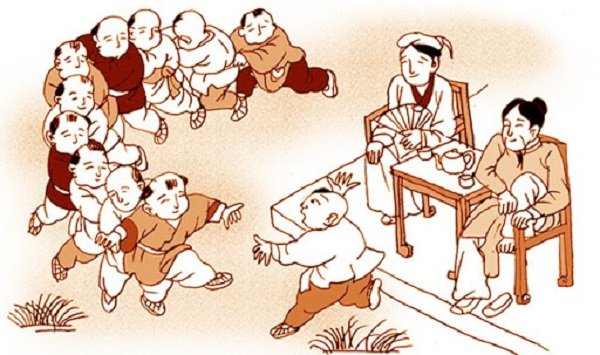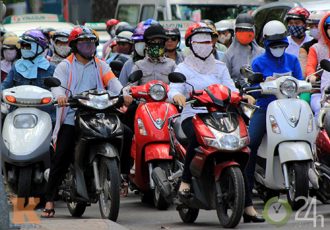There are many traditional Vietnamese games and toys that were invented a very long time ago and passed down from generation to generation. Depending on the region, these toys and games are varied. In this article, here is a list of some popular toys and games that are most iconic for representing Vietnamese culture.
Vietnam traditional toys
Tò He – Toy figure
What is Tò He?
To He is a small figurine made of sticky rice powder instead of plastic. It is one of Vietnam’s iconic traditional toys, especially popular in the northern countryside. This is also popular in the south, probably due to the migration of artisans from the north to the south.
The Tò He is also used as offerings in worship ceremonies explaining why they usually come in the form of animals, such as chickens, cows, pigs, fish, or flowers such as roses.
The making of To He:
The process of producing a colorful To He figurine includes preparing the dough, boiling the dough, adding food coloring, and the most important part – the intricate detailing and creativity to form the figurines. First, mix an appropriate portion of glutinous rice flour and water (glutinous rice flour will keep the elasticity of the product, especially in hot and dry weather). After that, the flour combination is soaked in water, then mashed, boiled, and quickly kneaded until it becomes smooth and dry. Next comes the dyeing of the paste in four basic colors yellow, red, black and green. Other intermediate colors can be made by mixing these colors. Previously, people used dyes of plant origin,
- Yellow: turmeric
- Red: thorny bitter gourd fruit or cape jasmine
- Black: fake daisy
- Green: galangal leaves
- Blue: indigo leaves
Where to find To He?
Artisans often roam the markets, villages, and streets to sell To He, especially where there are celebrations and festivals. Their tool kits contain simple tools like a small knife, bamboo sticks, beeswax, comb, and sponge to expose these traditional toys to children.

Diều – Paper kites
Origins of the paper kite.
The kite was born more than a thousand years ago. The ancients believed that the kite could banish bad and unhappy things. They wrote names of dangerous diseases on the kites, then cut the strings when the kites flew high. They wanted the wind to keep kites and plagues away from humans and prevent their descendants from being infected with the disease. Moreover, the kite was also an offering to the gods during the full moon night in the lunar calendar.
Variations of paper kites.
Nowadays, paper kites are commonly used as children’s toys and become a symbol of childhood memory in Vietnam. Kites not only bring joy, but also encourage creativity when making kites of different shapes, sizes, and colors, attaching accessories like ribbons and flutes to make sounds, and mastering the art of the wind. Today, kite flying is gradually moving out of tradition and becoming a cultural exchange event with massive competition in places like Vung Tau.

Lồng Đèn – Paper lanterns
How is the paper lantern made? Paper lantern is one of Vietnam’s familiar traditional toys. They come in a variety of shapes and sizes, as well as different fabrications. The simplest type of lantern is made of paper and attached to the candle inside. The more complicated ones have a bamboo or metal frame, with delicate decorative paper wrapped around the outside.
Where can I find paper lanterns? In Vietnam, paper lanterns are frequently used for decoration in pagodas or used as toys for recreational celebrations, especially during Mid Autumn Festival.
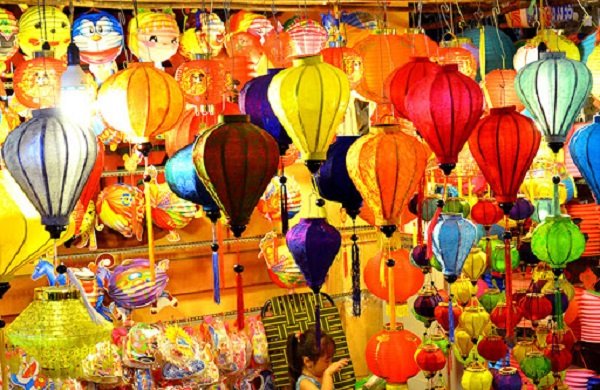
Vietnamese traditional games
Vietnam’s traditional games have played an important role in Vietnamese culture over time. These are still very attractive outdoor activities for many Vietnamese children. The most popular traditional games are “Rồng Rắn Lên Mây” and “Mèo Bắt Chuột”. These folk games can improve and refine observational skills as well as social skills, as children must team up and cooperate effectively to win.
Rồng Rắn Lên Mây
Rồng Rắn Lên Mây is one of the famous Vietnamese games for all children in the country. There are two characters in this game: the catcher and a dragon. The long dragon consists of more than 5 people lined up, while only one person acts as the catcher.
How to play. When the dragon arrives at the catcher’s house, they sing a song to call the catcher. After the song ends, the snake will say “chasing”, trying to catch the person standing at the very end, representing the tail of the dragon.
The head of the dragon (standing in front of the line) will have to move, and stretch the arms to protect the line. And everyone in line must move in the same direction as the head to avoid breaking the line. This makes their line wavy like a dragon flying to the sky, and thus, the game was named Rồng Rắn Lên Mây.
If the receiver can catch the tail, the next person in line from the end will act as the new tail. But if the catcher catches all of them or the dragon-like line breaks, the catcher wins. If the dragon succeeds in making a circle before the chase of the catcher, the dragon will win.
Mèo Bắt Chuột – Cat and Mouse
This game consists of more than seven members of a team. They stand in a circle, hold hands and raise their hands above their heads to create a barrier. Then they choose one person to play tag and another to play mouse. The two stand back to back in the middle of the circle.
How to play: On the count of three, the mouse begins to run around the circle and the cat must chase after it. The cat wins the game when the mouse is caught. At the start of the game, the people in the circle also begin to sing a song, usually a folk song. In addition, the circle formed by the children makes it difficult for the mouse or the cat to cross.
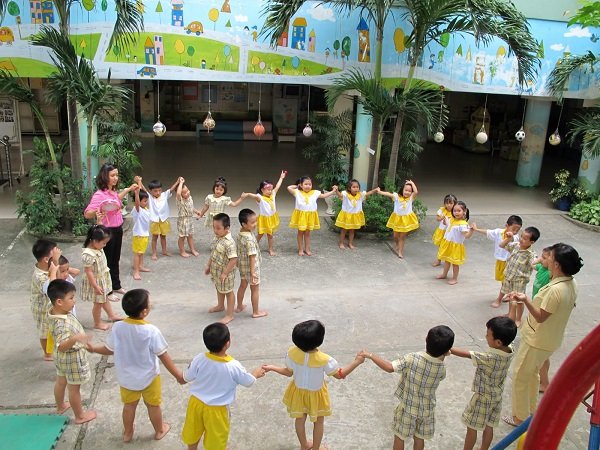
Nhảy dây – Skipping rope
It is a traditional game that many young children in primary and secondary schools still play, especially girls.
How to play: The rope is usually made up of a chain of elastic bands. The easiest way to play is to jump over a taut rope. The height will increase and whoever gets the highest height will be the winner. Another form is to make two parallel lines, a triangle or a square with the rubber rope and jump to the sides. The strength will also increase and whoever can complete the assigned towers at the highest level will win.
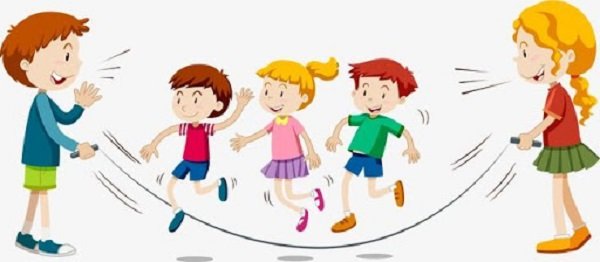
Banh đũa – Catch the ball
This is another popular traditional game, especially among girls. The requirements for the game are simple, including a tennis or bouncy ball and 10 chopsticks (5 pairs).
How to play: Starting with all cues on the ground, throw the ball up, pick up a cue with one hand, and catch the ball with the same hand. Continue until you have collected all the chopsticks on the ground. This game is good practice for eye and hand coordination.
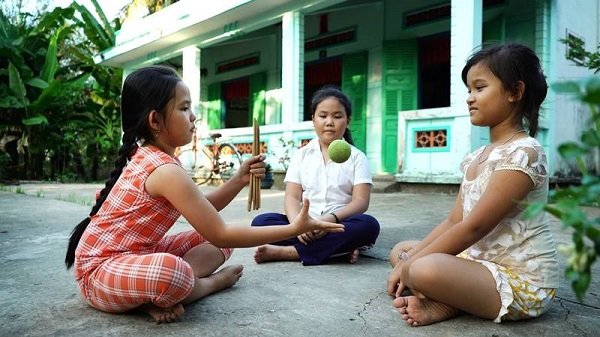
Đá cầu – Flying feather kick
This is a game and also a test in college physical education class. More boys than girls prefer kicking or football during their breaks.
How to play:
Alone: Whoever can kick and keep the shuttle in the air the longest is the winner.
You can also play in a group and practice coordinating with your team members by hitting the shuttlecock. Do not drop the steering wheel to the ground.
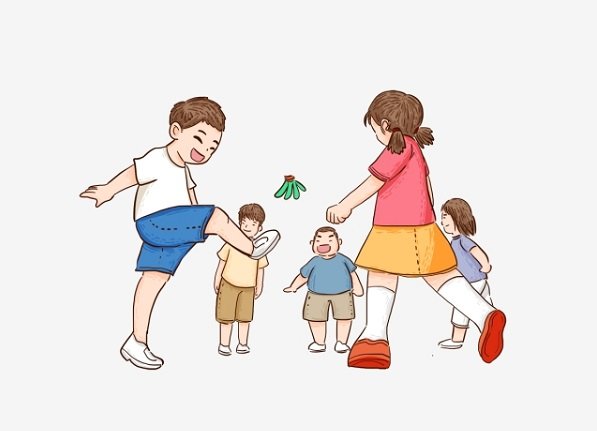
And there are many other traditional games and toys that Vietnamese children like to play like:
- Lò Cò (hopscotch)
- Bắn Bi (marble)
- Kéo Co (Pulling the rope)
- Ô Ăn Quan (A Vietnamese board game for children, capturing the Mandarin square)
Simple hand games to decide winner-loser, roles in play or players on each team like:
- rock Paper Scissors
- Chi Chi Chanh Chanh. (remove your finger before it gets caught in the palm)
- Nhiều Ra Ít Bi / Ít Ra Nhiều Bị. (turn your palm up or down to decide which team you will be on)
In conclusion, nowadays, with the availability of high-tech devices, Vietnamese traditional games and toys are not as popular as before. However, the benefits that these toys and games could bring to children are significant. The cultural value that these traditions embody is inestimable and must be preserved. When you visit Vietnam, you can always see these traditional Vietnamese games and toys used by children, especially in the countryside.

